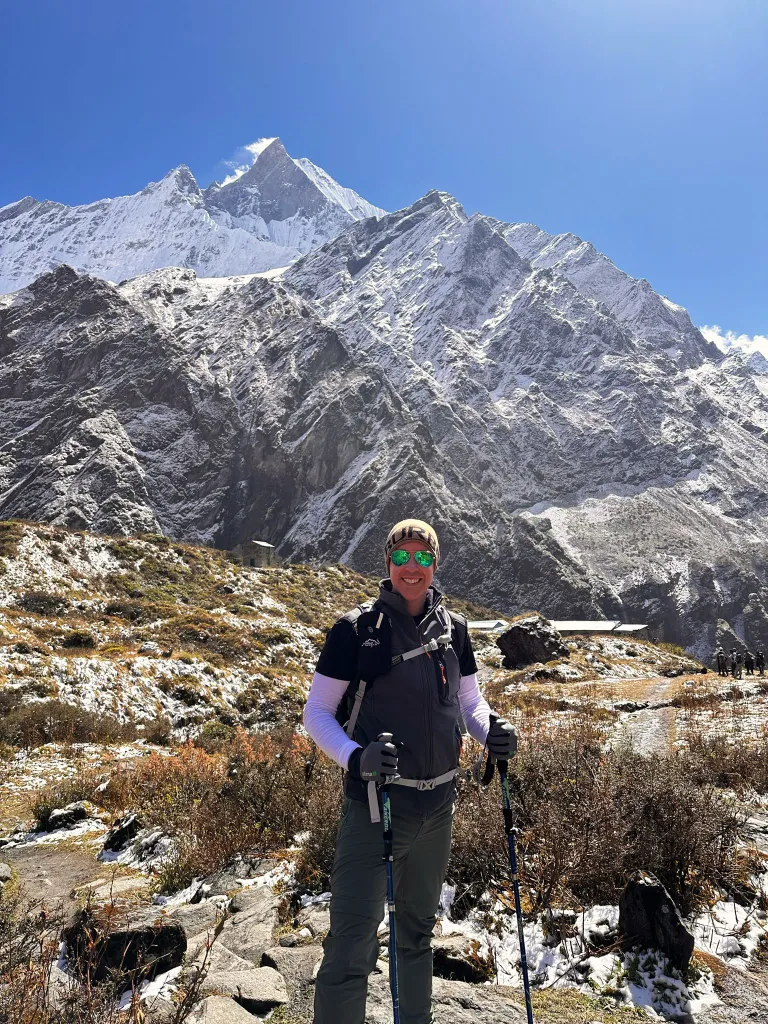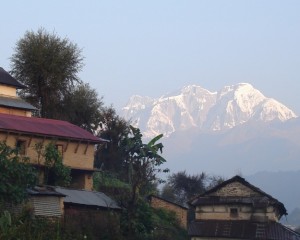Places to Visit During Everest Base Camp Trail
All of us have that one dream to experience the allure of the majestic Everest, the world's tallest peak. But fellow trekkers and nature enthusiasts might find it amazing to hear that Everest Base Camp is the complete package of scenic views, cultural gems and natural wonders ready to outshine your adventure in the lap of the Himalayas.
Along the journey of Everest Base Camp Trek, you make your way through the well-maintained trail, steep ascent crossing the Himalayas. Throughout your time, you will be cheered by the friendly Sherpa people, smiling at the majestic peaks of Everest, Lhotse, Changtse, Cho Oyu, Pumori, Nuptse, Thamserku, Island, Mera, Ama Dablam. At the same time, the flapping chorten, spinning the prayer wheel, and the attractive architectural monastery are the cultural landmarks highlighting the beautiful Tibetan culture of the Sherpa community.
But the real magic unfolds in the quieter corner apart from the landmark and scenic views that many of us tend to overlook. There are these hidden wonders and depths that promise to increase the serenity and adventure, contributing to unforgettable memories.
So, to help you make the most of your next adventure, our team has uncovered the lesser-known spots along the Everest Base Camp.
10 Hidden Gems of the Everest Base Camp Trek
Aside from the bustling market of Namche, admiring the friendly smiles of local people and enjoying the hearty meals of the tea houses on your way, there are a bunch of places you can stop by to add allure to the Everest Base Camp Trek. Let us get a quick insight into these unexplored places without any further ado.
Phakding Monastery
You walk to the steep ascent from the mountain town of Lukla towards the north, you will reach the beautiful valley of Phakding. This famous overnight stop is wrapped in the arms of the Everest Base Camp trek, standing at 2610m.
After getting the panoramic views of the charming village with Ama Dablam standing side by side and the cascading Dudh Koshi River, there is yet another spot many trekkers often miss.
Phakding Monastery, the cultural artefact standing in the valley, falls under the critical Buddhist monastery. The place is also called Rimijung Monastery.
On your path to Namche, you will encounter this monastery, located at a comparatively low height of around 2610 m. The beautiful aroma of the butter lamp and the chanting of Lamas enhance the peaceful environment. The monastery belongs to the Nyingma school of Tibetan Buddhism.
The monastery adorns the beautiful Buddhist rituals and native Sherpa culture. The fun fact is that many trekkers can take part in their daily rituals and meditation sessions.
Hillary Bridge

You will make your way towards the Namche and walk through the well-maintained trail, spinning the prayer wheel and waving to the children playing and women carrying loads for their cattle.
Just before you enter the Sagarmatha National Park gate, you reach the iconic Hillary Bridge, about 60m long, standing 135m above the Dudh Koshi River. The bridge got its name to honor the legendary climber Sir Edmund Hillary in 1953, made in the 2000s. Sir Edmund Hillary has supported the health and education infrastructure of the region.
Although there are two Hillary Bridges, so many trekkers need clarification. The newer one is built a bit higher and is currently in use. The old one stands there as it is strenuous.
As you take your steps in the roaring Dudh Koshi River, feel the cold breeze touching you, and hear the white majestic peak of Ama Dablam cheering you on, it is an unparalleled experience.
Despite being en route to the Namche, the experience of crossing the Hilary Bridge is a moment of connection with nature and history.
Thoop Danda
One hour before you reach the Namche Bazar ascending from the Dudh Koshi river valley, there is a place called Thoop Danda. The trail towards the Thoop Danda winds through the lush forest, and makes a gradual ascent, so many of you can find this place perfect for gaining your breath and feeling the cold breeze coming from the Himalayas.
The first place is situated at a height of 3710m, where you can first experience the allure of the majestic Everest, Nuptse, Lhotse, Island Peak, Kongde, and Kusum Kanguru.
If you are there in clear mornings or evenings, you can immerse yourself in the majestic views as golden rays stumble over the towering peaks and show off their golden hues to the trekkers. You take a moment to rest and add an unforgettable highlight of the journey toward Everest Base Camp.
Sherpa Museum
Now that you have reached the Hamlet town of Everest Namche, there are a bunch of things you can experience. But if you take the 20-minute uphill hike from the centre of Namche to the route of Chhokrung, you reach the Sherpa museum. The small world is run by Lhakpa Sonam, a local photographer who shows the rich culture and history of the local Sherpa people.
Sherpa are the leopards of the Himalayan region, having lived there for centuries. To showcase their rich history, the place has Sherpa artifacts, systematic documentation of Sherpa climbers, a gallery of photographs, and paintings highlighting the artistic expression of their bravery.
A short tour of the museum will give you an insight into these friendly local communities. Besides, there are libraries and conference halls associated with the museum that offer invaluable resources for those passionate about cultural preservation and research.
Everest View Hotel
When you are in Namche, you get a day of acclimatization. Using the extra day, you take an early morning 2 hours uphill hike to the altitude of 3880m in Syangboche to the Everest View Hotel perched above the town of Namche at an altitude of 3,880 meters. Thus, it holds the record as one of the highest hotels in the world.

The early morning sun rays strike Everest and enhance its beauty. You get to immerse yourself in the views, sip a cup of coffee, and have a savoury breakfast.
Moreover, the unique hotel establishment features twelve spacious rooms with en suite bathrooms, a comfortable sitting area, and access to beautifully crafted stone-walled balconies where guests can relax and soak in the charming surroundings.
The combination of comfort and adventure makes Hotel Everest View attract people from all around the world to get the lasting memories of their time in this extraordinary location.
Khumjung Village

Now that you make your way from Namche, you reach the village of Khumjung, situated at 3,790 in the Khumbu region of Nepal. The place is home to the traditional Sherpa settlement scattered throughout the region. At the same time, the majestic white Mount Everest, Ama Dablam, and Thamserku stand there, enhancing the picturesque village.
Throughout your way, you pass through charming stone houses, flying colourful prayer flags, and flapping chorten showcases the Sherpa artifacts. The trail to Everest Base Camp is the last settlement of the Sherpa people. After this, the settlement becomes thinner and thinner.
The Sherpa people of Khumjung follow the ancient culture and deep-rooted spirituality. Moreover, the village is a living museum of Sherpa culture where you can get hands-on experience of traditional customs, festivals, and the community's close connection to the land.
Similarly, to highlight their culture, there is yet another place in the village called Khumjung Monastery (Gompa). The ancient monastery houses precious artifacts, including a purported Yeti scalp, a part of intrigue to its historical significance.
If you are lucky enough, you will experience the festivals of Dumji and Mani Rimdu, which were celebrated in the monastery. If you want to experience this festival, it is better to contact Nepal Vision Trek to help you plan the trekking according to this festival's timing.
Tyangboche Monastery

In the Khumjung village lies yet another monastery, Tyangboche Monastery, at 3867 m. It was established in the early 20th century and developed as a centre for Buddhist learning and practice in the region.
You can observe the monastery's beauty, as it is adorned with intricate murals depicting Buddhist teachings, statues of deities, and ceremonial sherpa artifacts.
Besides, the monastery is a place where you can observe the religious and social activities of the Sherpa community. As you stop in the monastery, you experience a peaceful respite from the challenges of trekking at high altitudes. The marvellous views and spiritual environment make this place a must-visit destination for anyone exploring the Everest region.
Pangboche Monastery
The Pangboche Monastery is one of the oldest monasteries in the Khumbu region. Situated at 3985 meters in the lap of Everest, it holds great significance for both local Sherpas and trekkers.
The surrounding of Tawache, Everest, Nuptse, Lhotse, Ama Dablam, and Thamserku enhances the beauty of the region. Likewise, the architecture of Pangboche Monastery reflects traditional Tibetan styles and intricately painted murals depicting various Buddhist themes. Aside from the cultural significance, the monastery stands for a fantastic folklore.

Pangboche Monastery is its connection to local legends surrounding the Yeti. According to folklore, it is believed to be associated with this mythical creature. It adds an element of intrigue for people who are curious about Himalayan myths and legends.
The less crowded monastery along the route so you can get the best out of the peaceful experience and religious significance of the palace.
To wrap up, Everest Base Camp is a treasure of hidden gems for trekkers all over the world. The serene monasteries, the stunning viewpoints, and every corner have something great to offer.
During your trekking journey, make sure to include these places in your itinerary to add adventure and allure to your next journey. If you are planning to embark on the journey to Everest Base Camp, feel free to reach the Nepal Vision Trek.
FAQS






